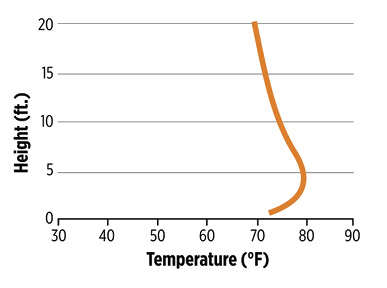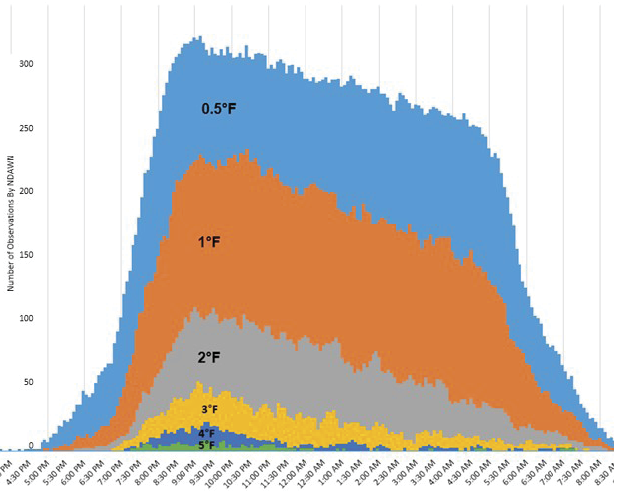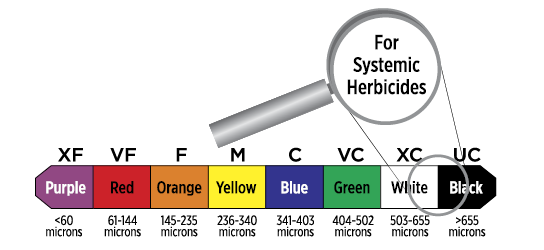For dense shelter belts with little through-flow, winds are reduced greatly near the windbreak, but wind speed fully recovers at about 15 times the height of the trees downwind. More open shelter belts allow more through-flow, so wind speed is reduced less near the trees, but the downwind effect persists for about 30 times the shelterbelt height. Wind speed in both cases also is reduced upwind for a distance equal to three to four times the tree height.
The reduced wind speed near shelter belts causes reduced air turbulence. As a result, daytime surface and air temperatures in sheltered areas are greater than those in open areas. However, when the surface is cooling at night, reduced mixing causes lower minimum temperatures, compared with open areas. The result is often earlier inversion formation near shelter belts in the evening and later dissipation in the morning.



